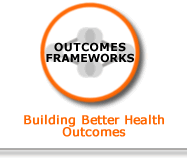There is limited evidence of an association between the intermediate outcomes in Model 2 (Knowledge and Awareness) and the activity of developing and communicating appropriate evidence-informed health promotion messages, in this context the ‘good work is good for health’ messages for the working age population (tailored for different groups).
Rationale
Policy Note
Sources
This activity is based on the assumption that ‘good’ work is good for health. This requires further explanation. Firstly, it is necessary to define ‘good’ work. For this we draw on the view provided by Waddell and Burton (2006, p34 [1]) who proposed a list of characteristics that might distinguish ‘good’ jobs and ‘good’ workplaces, including safety, fair pay, social gradients in health, job security, personal fulfilment and development; investing in human capital, accommodating, supportive and non-discriminatory, control/autonomy, job satisfaction and good communications. The emphasis must be on ‘good’ work as evidence shows that being in insecure employment or poor quality work might be no better for health and wellbeing than being unemployed.[1]
Rationale
Designing, developing and communicating appropriate evidence-informed ‘good work is good for health’ messages for the working age population (tailored for different groups) will improve understanding and awareness of this topic and contribute to individuals becoming enabled and motivated to seek support. This in turn will lead to engagement with services and individuals being better enabled and empowered to return to/remain in work and well.
Increasing knowledge, awareness and motivation among key stakeholders in workplaces, and service provider staff supporting individuals and workplaces (through recognition by staff in front line public services of the importance of work in improving health and wellbeing and addressing and reducing health and social inequalities) will contribute to behaviour change to support individuals.
The positive links between work and health, as well as the potential negative influence of unemployment and worklessness on ill health have been well evidenced.[1-7] There is a general consensus, although limited evidence, that successful return to work requires the provision of consistent information and advice (including the correction of unhelpful beliefs and myths) for all the players.[8 ]
There is some evidence to suggest that population level interventions using mass media campaigns and social marketing can be effective.6 Informed by reviews of effectiveness evidence, NICE public health guidance 06 Behaviour change at population, community and individual levels sets out a set of generic principles and recommended actions to guide the planning and delivery and evaluation of public health activities to change health related behaviour at the individual, community or population level. The NHS Health Scotland Commentary on this guidance supported these action points subject, where appropriate, to adaptation to fit Scottish organisational arrangements.[7]
A recent systematic review of effectiveness evidence made a series of recommendations around the use of mass media campaigns to change health behaviour, including that mass media campaigns should be included as key components of comprehensive approaches to improving population health behaviours.[9]
Scottish policy note:
The Scottish Government are to work with the Scottish Trade Unions Congress (STUC), Scottish Qualifications Authority (SQA), education colleagues and others to identify scope for developing health and work messages in education resources. (Health Works, p35)
Sources:
-
Waddell G, Burton AK (2006). Is work good for your health and well-being? The Stationary Office: London:
-
Acheson D, Barker D, Chambers J, Graham H, Marmot M, Whitehead M (1998). Independent inquiry into Inequalities in Health Report. The Stationery Office: London.
-
Ferrie JE (2004). Work, stress and health: the Whitehall II study. Public and Commercial Services Union: London.
-
Marmot M, Wilkinson RG. (2006). Social determinants of health (2nd edition). Oxford University Press: Oxford.
-
McLean C, Carmona C, Francis S, Wohlgemuth C, Mulvihill C (2005). Worklessness and health - what do we know about the causal relationship? Evidence review (1st edition). Health Development Agency: London.
-
NICE (2007). NICE public health guidance 06 Behaviour change at population, community and individual levels. NICE: London.
-
NHS Health Scotland (2007). Health Scotland Commentary on NICE Public Health Guidance: Behaviour change at population, community and individual levels. NHS Health Scotland: Edinburgh.
-
Waddell G, Burton AK, Kendall N (2008). Vocational Rehabilitation: What works, for whom, and when? A report for the Vocational Rehabilitation Task Group. The Stationary Office: London.
-
Wakefield MA, Loken B and Hornik RC (2010). Use of mass media campaigns to change health behaviour. The Lancet, 376: 1262-1271.
|



